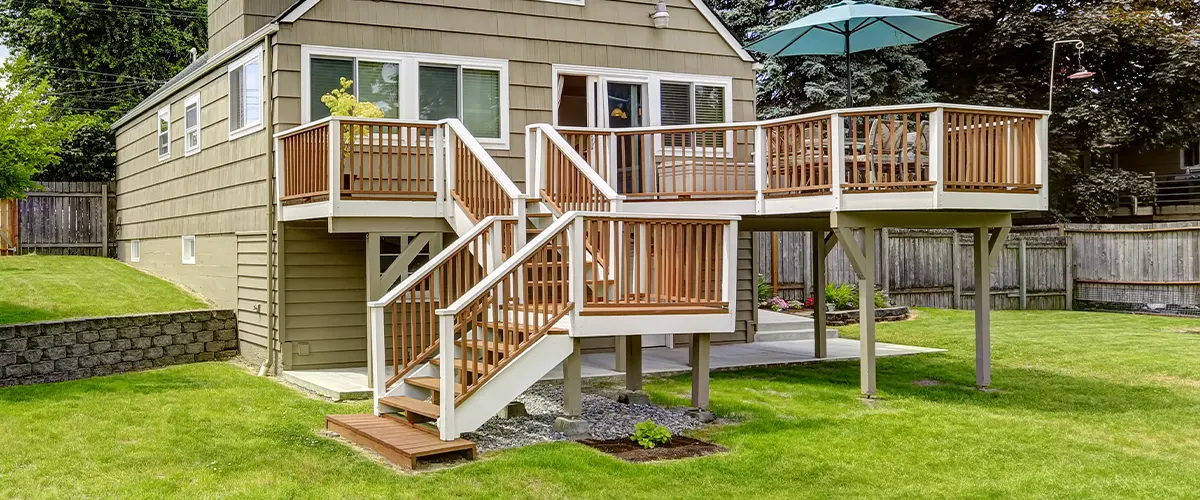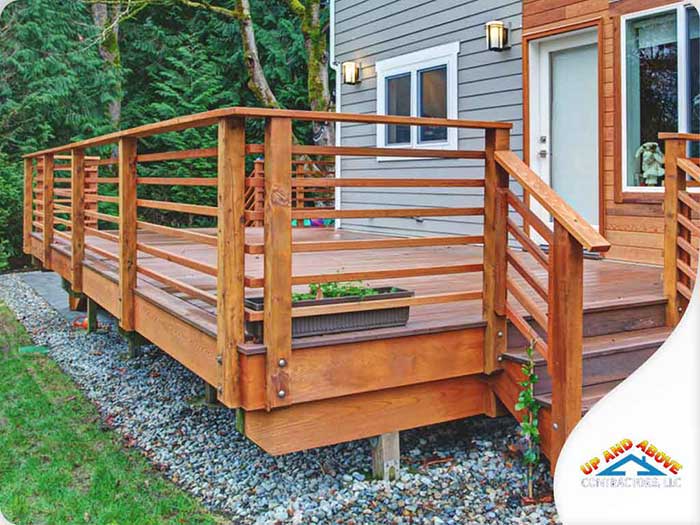From Principle to Concrete: The Vital Role of Deck Footings in Sturdy and Safe Decks
From Principle to Concrete: The Vital Role of Deck Footings in Sturdy and Safe Decks
Blog Article
Selecting the Right Deck Footings for Stability and Toughness
The durability and safety and security of your deck depend greatly on the type of footings you pick, as they offer the vital assistance and stability to withstand the test of time. In this conversation, we will certainly explore the different kinds of deck grounds, think about the vital aspects to evaluate when making a choice, and delve into the pros and cons of different choices.
Kinds Of Deck Grounds
These grounds consist of a cylindrical opening filled with concrete, which supplies a strong foundation for the deck articles. Concrete pier grounds are fairly easy to install and provide outstanding stability, making them a preferred selection for lots of deck jobs.
These footings are mounted by screwing them right into the ground, which produces a secure structure for the deck. They additionally permit for easy modification and leveling of the deck if needed.
Additionally, some home builders choose precast concrete grounds. These footings are constructed from long lasting concrete and come in various shapes and dimensions to fit different deck layouts. Precast concrete footings are convenient to set up and provide a steady base for the deck framework.
Lastly, one more alternative is the post-in-anchor ground system. This sort of ground involves driving a metal anchor right into the ground and connecting it to the deck message. It offers adaptability in terms of positioning the deck posts and appropriates for decks with lightweight frameworks.
When selecting the ideal sort of deck footing, it is vital to consider factors such as dirt problems, deck load, and local building regulations (Deck Footings). Consulting with an expert contractor or architectural designer can assist make sure the ideal ground is selected for a stable and secure deck
Factors to Take Into Consideration When Choosing Footings
When choosing the proper grounds for a deck, it is vital to carefully consider various aspects such as dirt problems, deck lots, and adherence to neighborhood building ordinance. These factors play a significant function in making certain the stability and toughness of the deck framework.
Among the primary elements to think about is the soil conditions. The kind of dirt on which the deck will be constructed identifies the kind of grounds required. As an example, decks constructed on sandy or loose soils might need much deeper grounds to supply appropriate support and avoid settling. On the other hand, decks developed on clay or extensive dirts may require footings that can accommodate the soil's propensity to broaden and agreement.
One more crucial factor is the deck lots. The weight of the deck, including the products utilized and any type of prospective online lots such as furniture or gatherings, need to be thought about when picking grounds. The footings must be developed to birth the weight of the deck and disperse it equally to prevent any type of structural concerns or failings.
Last but not least, adherence to local building ordinance is critical. Building regulations differ from area to region, and it is vital to adhere to the specific demands set by the neighborhood authorities. Deck Footings. These codes guarantee that the deck is constructed securely and satisfies the essential standards for structural integrity and load-bearing capability
Concrete Grounds: Benefits And Drawbacks

When used as the structure for a deck,Concrete grounds use numerous advantages and drawbacks. On the silver lining, concrete footings provide superb stability and resilience. Concrete is a stiff and strong product that can sustain hefty loads and withstand different climate conditions. It likewise has a lengthy life expectancy, making it a trustworthy selection for long-term usage.
Another benefit of concrete grounds is their convenience. They can be put into various sizes and shapes to accommodate different deck styles and configurations. Concrete grounds can be personalized to fit the certain needs and demands of the deck framework.
However, there are likewise some downsides to utilizing concrete grounds. One major disadvantage is the expense and labor associated with their installation. Concrete grounds require excavation and typically require the support of hefty equipment. This can increase the overall expense of the deck job and might require expert assistance.

Helical Piers Vs. Sonotubes: Which Is Much better?
In thinking about the structure alternatives for a deck, the contrast in between helical piers and sonotubes is important in determining the premium choice. They are turned right into the ground using hydraulic equipment, giving a durable and stable structure for the deck.
When it concerns stability and toughness, helical piers have the upper hand. The helical plates on the piers produce a strong hold with the soil, moving or avoiding any motion of the deck. This is particularly beneficial in areas with unstable or moving dirt conditions. Sonotubes, on the various other hand, count solely on the concrete filling up for stability, which may not use the same degree of stamina and resistance.
In regards to installment, helical piers are relatively much easier and faster to set up contrasted to sonotubes. The hydraulic equipment made use of to twist the piers right into the ground makes certain a fast and effective procedure. Sonotubes, on the various other hand, call for digging holes and pouring concrete, which can be labor-intensive and lengthy.
Additionally, helical piers are a more flexible alternative. They can be utilized in various dirt conditions and can be changed or reinforced if required. Sonotubes, on the various other hand, may require added assistance, such as rebar, in specific dirt problems or locations with high lots needs.
Choosing the Right Footings for Your Deck's Dimensions
For optimal architectural stability, it is necessary to thoroughly select the suitable grounds that align with the dimensions of your deck. The dimensions of your deck, including its height, size, and size, play a significant duty in establishing the type and size of grounds needed.
When choosing footings for your deck, it is essential to take Go Here into consideration the load-bearing capacity of the dirt. The weight of the deck, integrated with the weight of any furnishings or people on it, puts in a significant force on the footings (Deck Footings). It is critical to pick footings that you can try here can appropriately support this weight without sinking or changing over time.
The shapes and size of the footings ought to likewise be thought about. Larger decks with higher measurements call for larger footings to supply enough security and support. The shape of the grounds, whether they are square or rounded, depends upon the style and format of the deck. Additionally, the deepness at which the footings are mounted should be determined based upon the frost line in your region to stop any type of heaving or shifting because of freezing temperature levels.
Verdict
To conclude, choosing the ideal deck footings is critical for ensuring stability and durability. Aspects such as the sort of grounds, the deck's dimensions, and the benefits and drawbacks of different options must be considered. Concrete footings offer strength and longevity, however may be more pricey and lengthy to install. Helical piers and sonotubes have their own benefits and negative aspects. Ultimately, picking the proper footings for your deck's certain requirements is important for a effective and resilient structure.
These grounds consist of a round hole filled up with concrete, which provides a strong structure for the deck posts. Concrete pier footings are reasonably easy to mount and use superb security, making them a popular choice for several deck tasks.
Precast concrete grounds are hassle-free to mount and give a steady base for the deck framework.
It provides flexibility in terms of placing the deck posts and is suitable for decks with read the full info here light-weight frameworks.
Concrete footings supply numerous advantages and disadvantages when used as the structure for a deck.
Report this page